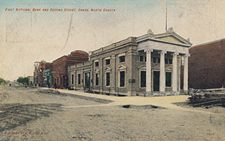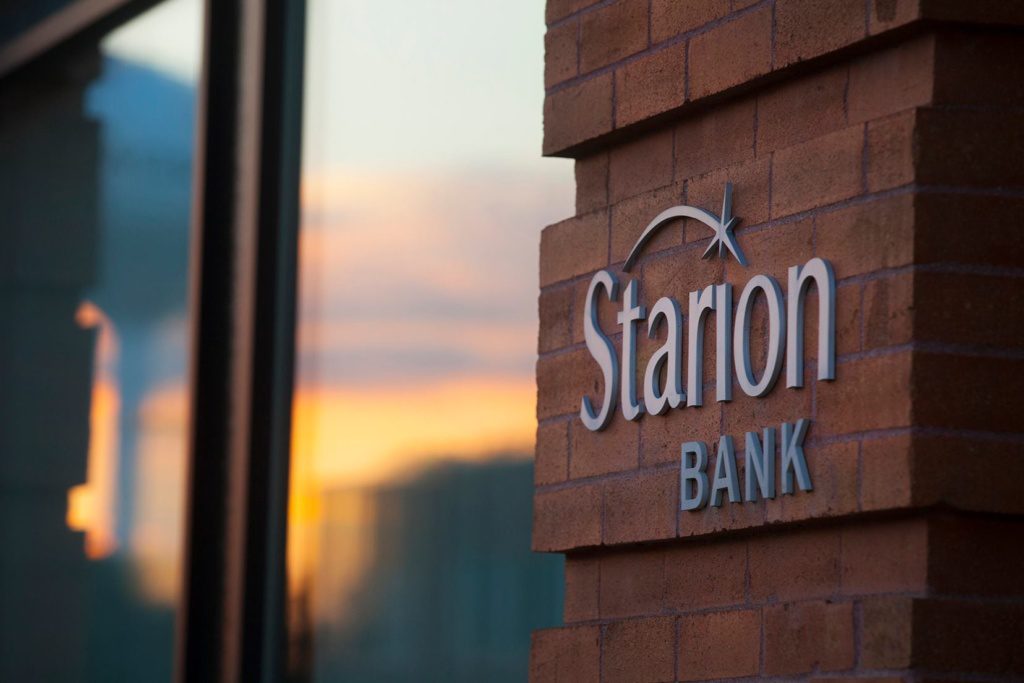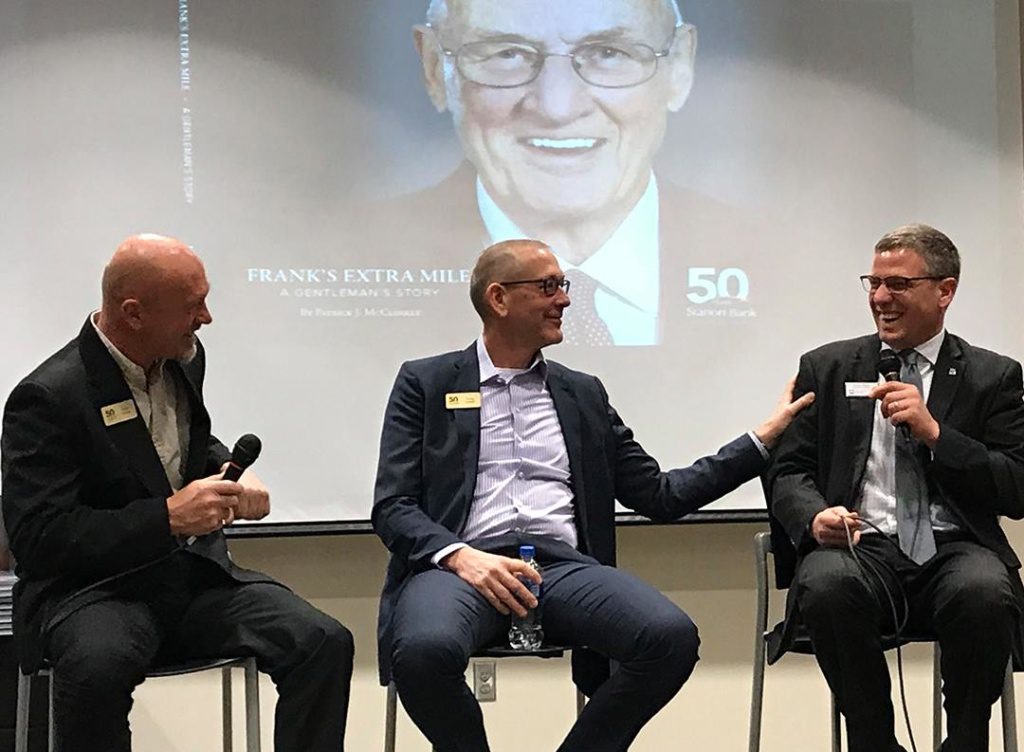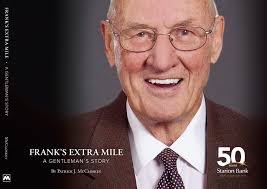Preview a ‘taste’ of family business at one-of-a-kind dinner
Recent News
Unconventional banker builds multigeneration success
Frank Larson was not a typical banker.
First, he was a lawyer, who bought his first bank at age 40.
Second, while his portfolio of banks grew, he never worked in the business day to day.
Instead, Larson set the tone, vision and values of Starion Bank with the power of his personality and civic-mindedness in a way that allows the bank to reach its 50th anniversary this year.
It began in 1969 when Larson became involved in a legal transaction involving a North Dakota bank.
“He really learned how a bank could be a tool to do good and to help people,” said his youngest son, Craig.
“Dad just had a dream and persevered. As a child, I remember him sitting at his desk with a legal pad constantly crunching numbers and formulating his plan.”
Larson’s plan started in Oakes, a city in southeast North Dakota where a friend told him Main Street was filled with young and progressive people.
“He felt the town could really blossom if the bank would do its part, being community-minded and helping the city grow. He got really excited about being part of that,” Craig said. “And for 50 years, our mission has been to help people realize their dreams and help communities grow and provide opportunities for people to find meaningful careers.”
Larson began growing the business in the early 1970s. He bought one bank in western North Dakota on a handshake over a cup of coffee with the owner.
“He’s from a different era,” his son Scott said. “Integrity and honor resonates through him. He’s a rarity.”
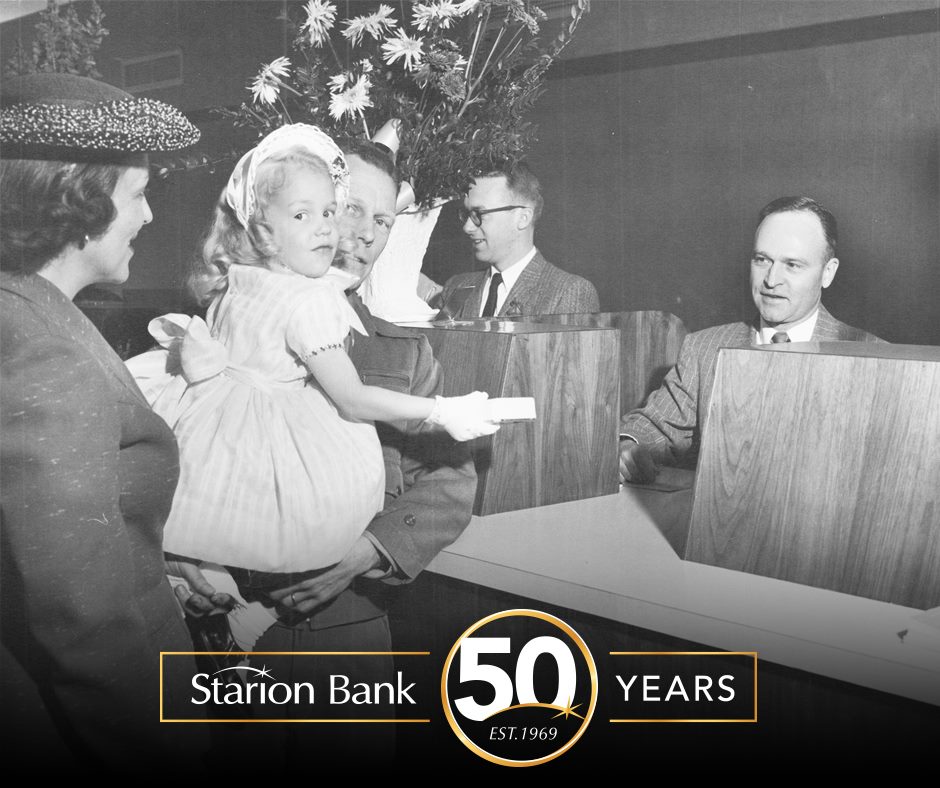
After one acquisition, Larson took out an ad in the community newspaper showing a man with money coming out of his ears. It read: “We’ve got money coming out of our ears.”
In that bank’s first year of operation under Larson, it opened 300 checking accounts in a town with a population of 600 people.
The bank bought an airplane in the 1970s, and if someone needed to fly for a business opportunity, Larson would make the plane available.
“No charge or expectation of anything – it was just a way to help,” Craig said.
About that same time, in the towns where he had banks, Larson started a program to encourage kids to pick up trash. In return, the ones who collected the most earned a trip to Minnesota for a Twins game.
“Dad made an arrangement for the kids to meet the Twins players, and we have pictures of these young kids standing next to these star players,” Scott said. “That was just Dad giving back, just generating a spark for kids. Nobody did those kinds of things.”
Starion Bank now has 15 locations: 12 in North Dakota and three in Wisconsin, and soon will open in downtown Fargo, its 16th location.
Craig, who began working at the bank after college, was named president and CEO in 1997 as his father transitioned to the board of directors.
As he prepared for the leadership role, Craig told his father he thought the bank needed an experienced lender to help harness growth opportunities in larger North Dakota communities.
“So we interviewed bank president candidates and hired a gentleman who was my mentor,” Craig said. “He helped train me, and I had three great years learning from him how to run a bigger, more complex organization. So at the handoff, I felt very blessed; I had my dad as a mentor, and I had this gentleman’s guidance, and he’d been a very successful banking executive for 40 years.”
The bank reached $1 billion in assets six years ago.
Larson’s response?
“He said, ‘The funny thing is I’ve found the more good I’ve done for people, the more it’s returned,’” Craig said. “He doesn’t think about how to make more money. It’s how do we help more people.”
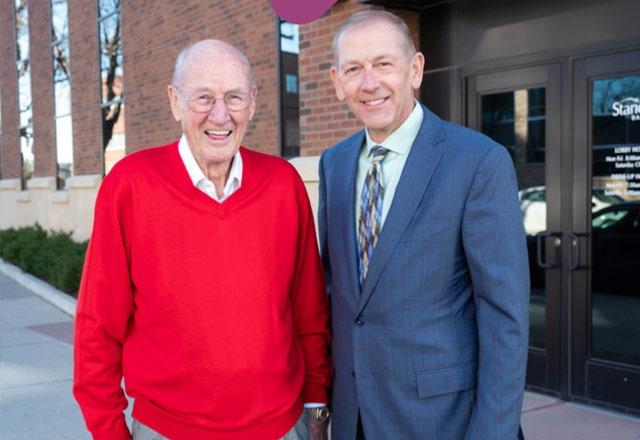
Starion Bank also has built relationships in South Dakota as it has grown, thanks to years of involvement with the Prairie Family Business Association.
“We did some family work back in the 1990s, rather emotional and sometimes pretty hard work, and we were working on a plan for about 10 years but really didn’t have any formal meetings with advisers or family business consultants,” Craig said.
He remembers telling his wife he felt like he wasn’t actively investing in the family business element of the bank, but in the Bismarck area he also lacked resources to do so.
“So just short of serendipity, I’m having this thought, and a friend reached out who had just gotten a call from the Prairie Family Business Association that they wanted to make outreach into North Dakota,” he said.
“It was like a dream being answered.”
He remembers attending his first meeting as the second or third North Dakotan to be involved.
“I had a little trepidation about how I’d be received because it was all the South Dakota people, but I met everyone and heard their stories and thought ‘Oh my gosh, I’ve been welcomed with open arms.’ So I threw myself into the association.”
He began serving on the association’s board shortly after that and spent two terms as chair.
“A lot of the things we’re doing now in the family as best practices are things I’ve learned through the association,” he said. “It’s been great. You get back way more than you give. There’s a camaraderie and feeling of support that we’re all in this together.”
The Larsons and Starion have made a significant impact on other families, said Laura Schoen Carbonneau, executive director of the Prairie Family Business Association.
“Starion Bank is such a strong example of leading with vision and being intentional about providing support to its next generation,” she said.
“Craig and his family have been instrumental in helping our organization become a regional resource for family businesses. By sharing their experience and providing leadership through our board, they’ve helped grow our presence in North Dakota and established wonderful relationships across state lines.”
Last summer, the Larson family did a next-generation retreat inspired by the association, bringing its third generation to tour the bank and volunteering at a homeless shelter to underscore their business values.
“I know many family business founders who work 60, 70 hours a week in their companies, but our dad has had just as much influence not having been there every day just because his values are so well known and people really want to follow him,” Craig said. “It’s important to model that for our next generation.”
His three siblings have ownership in the bank but don’t work there day to day.
Their children currently aren’t working in the bank, but “the next generation is being groomed to be good stewards of the business,” Scott said.
“We want them to walk the same path that Dad has of integrity and the values he’s operated under all these years. So even though they may not be day-to-day employees, they will still play an integral role in the owners’ group and have a voice so there will always be a family presence.”

At 90, Larson is as interested in banking as ever, his son said.
“All he’s ever said is, ‘Craig, just keep me aware of what’s going on, and I’d love to know what’s happening,’ and he’s happy to step away as long as he’s in the loop. I still run things past him to get his thoughts, and he still offers good advice. When he comes to the banks, he still knows everyone’s names.”
The family’s story was immortalized recently in a book published by the University of Mary. The university printed the book as an educational tool, and the bank purchased copies for libraries and senior centers in the communities it serves.
“We want it to be read and to be an inspiration that encourages others to commit their lives to doing good things, whatever their chosen profession might be,” Craig said.
To further symbolize that commitment, the bank has designated this 50th anniversary year as “the year of caring and giving,” allowing each of its 240 employees to designate $500 toward a nonprofit of their choice and giving each two days of paid time off to volunteer for an organization of their choice.
“We thought how better to honor our father and our culture than to have this year be one where we’re out making more positive differences,” Craig said.
“We all have the same challenges and opportunities and successes and struggles, but here we are 50 years later and working hard to make sure we’re here 50 more. We’ve got so much opportunity and so much good we’re going to do.”


